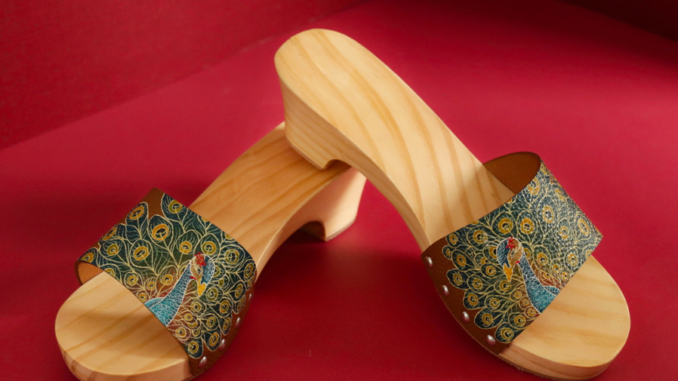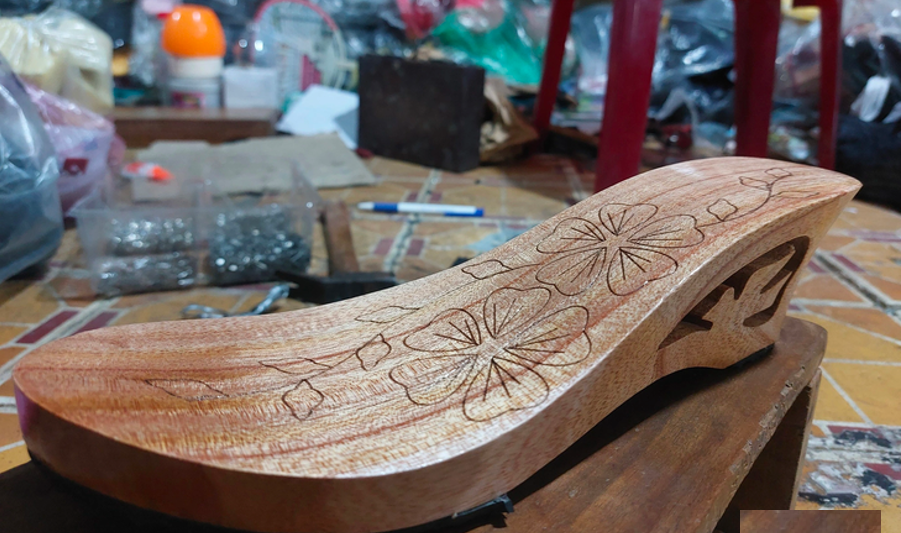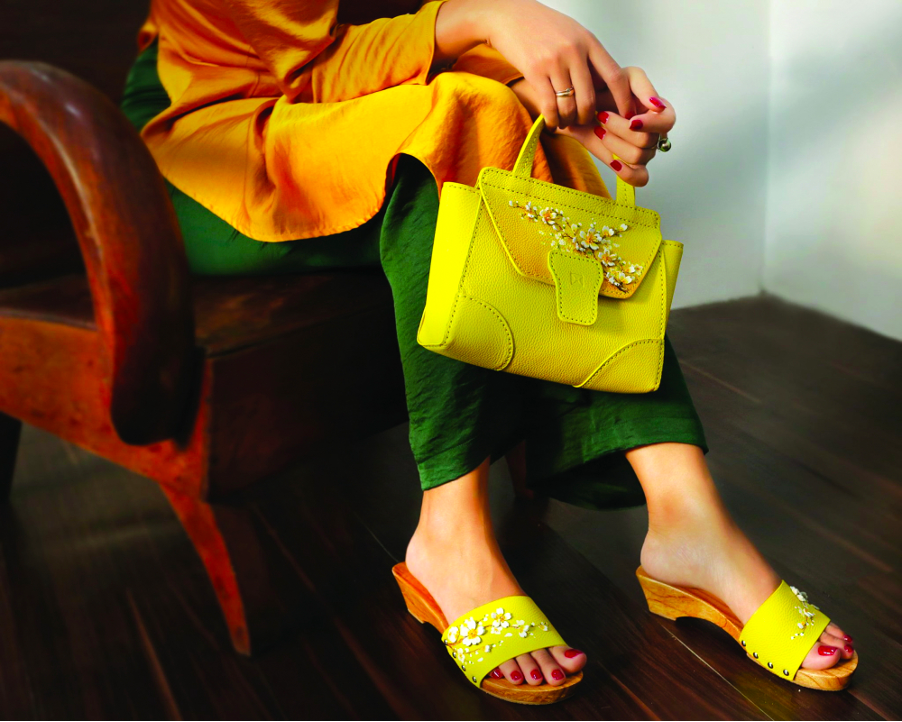
Vietnamese wooden clogs, known as “guốc mộc” in Vietnamese, are a traditional type of footwear that has been worn in Vietnam for centuries. They are typically made from a single piece of wood, with a flat sole and a strap that goes over the top of the foot. Guốc mộc are often decorated with intricate carvings or painted with colorful designs.
Guốc mộc were originally worn by both men and women, but they are now more commonly associated with women. They are especially popular in rural areas, where they are seen as a practical and durable option for everyday wear. In recent years, guốc mộc have also become popular with tourists and as a fashion item.
The origin of Wooden clogs in Vietnam
The earliest reference to sandals was in the third century, when a Vietnamese resistance leader called Ba Trieu wore ivory clogs. Experts believe it took until the Tran Dynasty (1407-1409) before bamboo sandals made from bamboo roots were worn by the population who up until this time went unshod.
Before the August Revolution in 1945, clogs produced in Hue were called “capital clogs” or Guốc kinh. These clogs had soles made from coconut shells or light wood, painted white and gold with embroidered straps.
The Wooden clogs (Guốc Mộc) became more popular under the French Rule during the Nguyen Dynasty (1858 -1945). At first rich town dwellers wore the new wooden sandals before the costume eventually spread to rural workers. Generally school children wore clogs up until the 1940s.
Materials and Shapes

There are many different styles of guốc mộc, each with its own unique features. Some guốc mộc have high heels, while others have flat soles. Some are made from lightweight wood, while others are made from heavier wood. There are also guốc mộc that are designed for special occasions, such as weddings and festivals.
The Wooden clogs were made in craft villages in the northern provinces of Bac Ninh and Ha Tay, and Thanh Tri and Thanh Xuan districts in Ha Noi. The clogs were made from a special wood called sapelle, jackfruit wood,… because of its light weight, strength and durability.
The curved sole makes the knot of the front strap not rub on the ground. The soles of women’s clogs were shaped like hour-glasses, while sampan clogs (men’s clogs) had flat soles. The white wood was left unpainted but well-to-do people would have their clogs painted in black and brown with a pale coloured triangle on the side of the sole.
Sandals varied from the very expensive to the cheap and cheerful. Most people kept their better sandals for special and solemn occasions and they were often worn with traditional ao dai dresses. Gradually the wooden sandal was replaced with designer fashion.
The straps, which were attached through a hole in the front and a pair of holes on the sides, were braided from soft cloth.
From the past to the present
In the countryside, Vietnamese wooden clogs dominated with their presence on every street, on fashion catwalks, and in the gift bags of expatriates. Along with Vietnamese ao dai, and conical hats, wooden clogs create a Vietnamese tradition’s beauty for women, the beauty of gentleness, grace, and secret charm.
Clogs are items associated with Vietnamese people’s daily life and have been firmly imprinted for thousands of years in the nation’s cultural heritage. There was a time when the use of clogs (and thus the production of clogs) had subsided and seemed to gradually disappear. Happily, the revival of clogs in recent years proves that the concept of beauty is becoming more and more diverse, and also partly shows the preservation and appreciation of simple things by today’s young people.

Guốc mộc are a popular souvenir for tourists, and they can be found in many markets and shops throughout Vietnam. They are also a popular gift for friends and family.
Guốc mộc are not only practical and durable, but they are also stylish and fashionable. They are a unique and traditional Vietnamese souvenir that is sure to be treasured for years to come.
We would be pleased to have you visit and take in our breathtaking scenery, unwind on our white sandy beaches, immerse yourself in our exquisite culture, and get to know the people of the friendliest nation. Especially, to savor our delicious food at restaurants with Michelin ratings or to come and participate in our incredible mega-events involving culture, music, sports, and tourism!
Make your plan to Vietnam right now by obtaining a Vietnam visa at https://www.vietnam-evisa.org. We, a reputable and reliable Visa service, will assist you turn your plan into reality at the very first step.